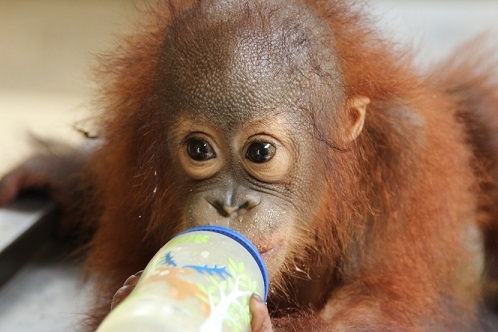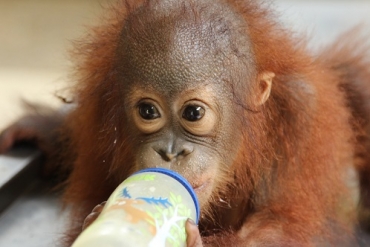
 Animal Planet HD World, the premiere high-definition wildlife channel, in its new series Meet the Orangutans offers a window into the extraordinary daily drama of the world’s oldest Orangutan Sanctuary, Sepilok in Malaysia. The channel puts heartfelt stories, both human and animal, at its heart to reveal the character of this wonderful species.
Animal Planet HD World, the premiere high-definition wildlife channel, in its new series Meet the Orangutans offers a window into the extraordinary daily drama of the world’s oldest Orangutan Sanctuary, Sepilok in Malaysia. The channel puts heartfelt stories, both human and animal, at its heart to reveal the character of this wonderful species.
Filmed in the Malaysian state of Sabah on Borneo’s tip, Sepilok is the last remaining oasis of tropical rainforest, and home to no less than 50 of these ‘people of the forest’ at any one time. The series follows the apes from their arrival as tiny orphaned babies, to their triumphant release back into the wild as young adults. From babies being bottle-fed and wearing nappies, to teenagers being taught how to climb trees, and wounded Orangutans arriving at the sanctuary needing urgent veterinary care, there is never a dull moment.
Meet the Orangutans kicks off on Animal Planet HD World on February 22nd and will air Monday to Thursday at 10 PM.
Meet the Orangutans follows the lives of residents (orangutans) including Peanut, Beryl, Chiquita and Gelison, as they learn the crucial survival skills necessary for their eventual release. Then there’s the teenagers who aren’t quite as innocent and eager to learn – whether it’s weigh-ins, forest school or feeding time, there’s always the opportunity to pick locks, mug tourists, steal tools…or just hang around plotting the next heist.
The human carers, led by Susan (Sue) Sheward, Founder and Chairperson from the Orangutan Appeal UK, are every bit as colourful too, and the jury’s still out on who rules the roost – the staff or the apes.
On top of the day-to-day madness, primatologist, James Robins – who heads the charity’s ground breaking research project, operating out of little more than a shack and living on tinned food for months at a time – will assess just how adaptable, how extraordinarily intelligent, and how much like humans these gifted creatures really are. James overseas a range of intelligence tests, that would stump some humans, displaying their brilliant ruses for getting one over on the visiting tourists, and their whole system of communication.
Uncovering intriguing facts about their psychology and biology,Meet the Orangutans reveals how much like us these animals really are.
Due to commercial logging and illegal hunting, the orangutan is an endangered species. With the dwindling numbers just one little orangutan can make a lot of difference.
Interesting facts about Orangutans
Orangutan is a species of anthropoid (manlike) ape. Orangutans are related to gorillas, chimpanzees, and gibbons. They are found in tropical rain forests of the islands of Sumatra and Borneo.
An adult male orangutan is twice the size of an adult female of the species. In addition to the difference in size, the face of a male and the face of a female are different, too. A mature male orangutan has broad cheek pads that jut out from the sides of his face. He also has a large throat pouch. A female has no cheek pads and only a small throat pouch. Because of their red hair, orangutans look very different from the other apes.
The female gives birth to a single offspring after a gestation period of eight to nine months. The young orangutan is carried on the mother’s back for about a year. It is usually weaned after two years. Their average life span is 30 years.
Habitat – Orangutans spend around 90 per cent of their time in the trees. They feed mainly on fruit, insects, and leaves. At night they gather leaves and twigs and build a large platform-like nest on which they sleep.
Body – They use their long, powerful arms to swing from one branch to another. Their thumbs and big toes are opposable, allowing them to grasp things with their hands and feet. Orangutans can walk on the ground, but they rarely do so. When they do, they walk on all four limbs, slowly and cautiously, and they usually only walk as far as the distance from one tree to the next.
Loners – They typically live alone or in small groups. Scientists think that orangutans spend most of their time alone because of their feeding needs. Often, too little food is available at any one spot to feed a whole group or to feed even a single orangutan for very long.
Did you know?
1.The orangutan is Asia’s only great ape.
2. Humans and orangutans share 97 per cent of the same DNA.
3. Their name comes from the Malayan, for “man of the woods.”
4. Orangutans are loners.
